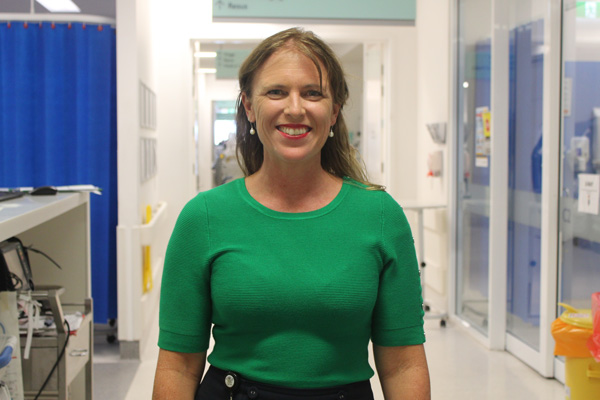Research yarning’ is helping to improve health outcomes for Aboriginal and Torres Strait Islanders at Redcliffe Hospital
Redcliffe Hospital’s new Deadly RED Emergency Department pathway is being evaluated using ‘research yarning’ as a culturally adapted research methodology that more effectively engages with Aboriginal and Torres Strait Islander patients.

Redcliffe Hospital’s new Deadly RED Emergency Department pathway aims to more effectively engage with Aboriginal and Torres Strait Islander patients
Dr Michelle Davison is an emergency department physician and was the Medical Director of the Critical Care, Women’s and Children’s Service Line when the Deadly RED pathway was being developed along with the Executive Director, Indigenous Health Liaison Officer and Cultural Capability team at Redcliffe Hospital.
“We developed the pathway in response to statistical research that showed a greater proportion of Aboriginal and Torres Strait Islander patients were leaving the emergency department without receiving or completing their care, compared with other patient cohorts,” Dr Davidson said.
“Deadly RED emphasises early engagement with Aboriginal and Torres Strait Islander patients when they present to the Emergency Department. It helps prevent them from leaving but also acknowledges that they may need to leave too. If they do leave, a clinical follow-up is conducted within 24 hours.
“To date, the pathway has been successful in reducing clinical risk and providing us with more opportunities to connect patients with community-based alternative services that they may prefer.”
When undertaking the research, the team considered a range of options for collecting responses from Aboriginal and Torres Strait Islander consumers such as patient surveys.
“The strong advice from our Indigenous Health Liaison Officers and Cultural Capability Officers was that those methods wouldn’t give us the quality of response we needed,” Dr Davidson said.
“We had to change how we engaged with our consumers and find a research method that would be appropriate for them.”
Elwyn Henaway is a Cultural Capability Officer at Redcliffe Hospital and was the first to suggest a shift to yarning as the basis of engagement with Aboriginal and Torres Strait Islander patients.
“Aboriginal people would rather tell their story. You can’t do that with closed yes or no style questions. Yarning is a way to bring out that story and the information clinicians need to hear,” Elwyn said.
“Yarning helps overcome the barriers for Aboriginal and Torres Strait Islanders in accessing hospital care, such as the historical mistrust of government services and fear of health facilities.
“Yarning means spending more time with the patient, listening to their story, getting to know them, and building that trust. It’s leaning toward a holistic approach to healing and getting the patient’s health needs met.”
Dr Davison said that in rolling out the hospital’s new research yarn methodology, an Aboriginal and Torres Strait Island identified researcher was also used to build rapport and trust with research participants.
“Because the research yarns could identify unresolved clinical or other issues, we added a therapeutic yarn follow-up, where participants could be referred to appropriate community services,” Dr Davison said.
Dr Davison said the Deadly RED pathway was rolled out in early 2022 and that another round of research yarning would help evaluate its success over coming months.
